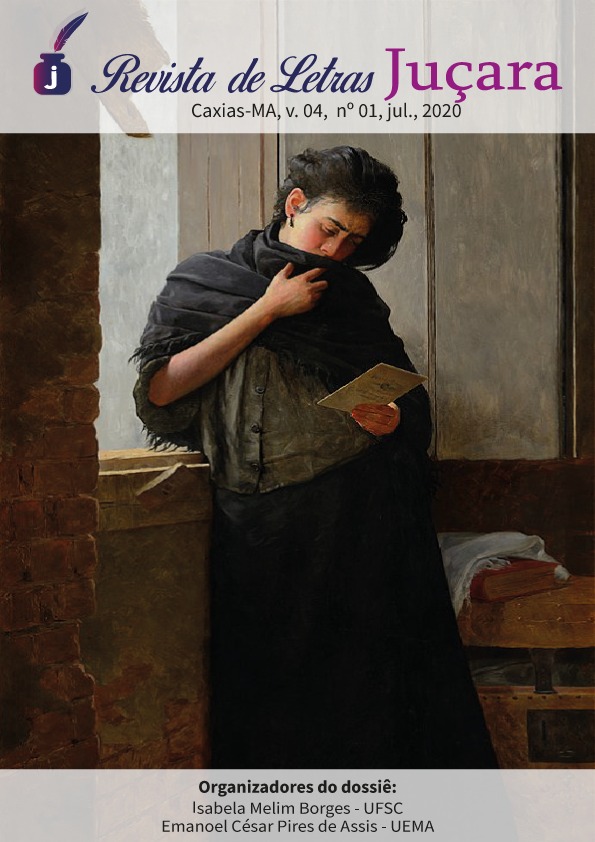A MALANDRAGEM DE RITA BAIANA: A CONSTRUÇÃO DO EROTISMO E DA VOLUBILIDADE DA PERSONAGEM E AS RAÍZES DA HERANÇA ESCRAVISTA
DOI:
https://doi.org/10.18817/rlj.v4i1.2244Resumen
O propósito deste artigo é analisar a trajetória da personagem Rita Baiana em O Cortiço (1890), em especial os pontos que a aproximam da figura do malandro na literatura brasileira. Partindo do perfil traçado por Candido (1970) em Dialética da malandragem e das modulações a esse perfil, propostas por Otsuka (2007), é possível observar que à malandragem, como fenômeno social provocado pelo sistema escravista, acrescenta-se o fator do erotismo quando pensamos nas personagens femininas. Visto isso, enxergar Rita Baiana como “malandra” é também notar seu lugar entre as outras mulheres da narrativa e como a voz do narrador é marcada pela ambivalência do racismo e do desejo ao construir a personagem.
Descargas
Publicado
Cómo citar
Número
Sección
Licencia
A submissão de originais para a Revista de Letras Juçara implica na transferência, pelos autores, dos direitos de publicação. Os direitos autorais para os artigos publicados nesta revista são do autor, com direitos da revista sobre a primeira publicação. Os autores somente poderão utilizar os mesmos resultados em outras publicações indicando claramente a Revista de Letras Juçara como o meio da publicação original.


